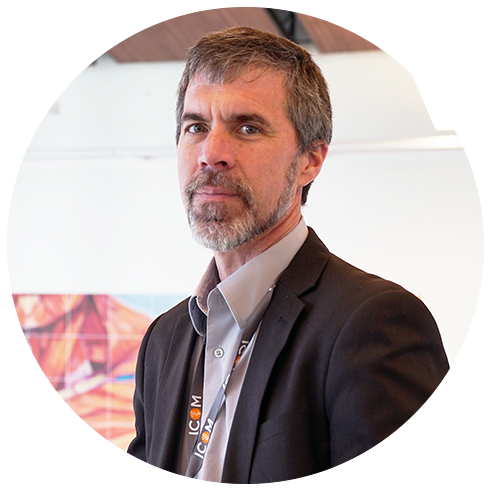
Our duty as an institution is to populate underserved areas with physicians. I grew up in what today is an underserved community, and have felt that we needed more physicians in Idaho, and ICOM is providing that service.
ICOM is dedicated to training high-quality osteopathic physicians prepared to care for people in the Mountain West region and beyond with an emphasis on rural, underserved areas. ICOM was conceived and established to attract a well-qualified faculty and student body, as well as to have the technical and other resources necessary to effectively train physicians for 21st Century medicine.
Idaho College of Osteopathic Medicine strives to be the nation's leader in training caring and expert osteopathic physicians. Interested in learning what makes ICOM different? Here are a few facts to get you started.
ICOM’s medical education is a four-year program to achieve the Doctor of Osteopathic Medicine (DO) degree. The first two years, known as the preclinical years, are spent on campus. The final two years, referred to as the clinical years, take place in various clinics and hospitals, where students receive hands-on training
The faculty members at ICOM are passionate about medical education and are dedicated to the success of our students. With a balance of both biomedical and clinical faculty members, ICOM students will feel supported throughout their medical school journey.
The majority of ICOM graduates continue their medical training in one of the primary care specialties, which include family medicine, internal medicine, and pediatrics. In ICOM’s Class of 2023, 51 alumni entered a family medicine residency after graduation.
ICOM is training the next generation of osteopathic physicians and healthcare leaders, with added emphasis on serving rural and underserved regions.
The Idaho College of Osteopathic Medicine (ICOM) is excited to share it has been formally accepted into the Teaching Kitchen Collaborative (TKC), a leading network…
Are you a prospective medical student interested in learning about what ICOM has to offer? Then join one of ICOM’s Recruiters, Kiana Poole, for a…
ICOM’s Doctor of Osteopathic Medicine (DO) program is a four-year program. Students spend the first two years of instruction on campus and the last two years of instruction integrated into a community hospital and/or health system, working directly with physician instructors and patients. Learn more about ICOM’s DO program here.
According to the American Association of Colleges of Osteopathic Medicine (AACOM), there are currently 42 accredited colleges of osteopathic medicine in the U.S. These colleges deliver instruction at 67 teaching locations in 36 states. ICOM is the first and only osteopathic medical school in Idaho.
There are more than 38,000 osteopathic medical students in the U.S., according to AACOM. In fact, osteopathic medical students make up approximately 25% of all medical students in the U.S.
Osteopathic Medical Profession: The osteopathic medical profession is fast-growing. According to a 2023 report from the American Osteopathic Association (AOA), the total number of osteopathic physicians in the U.S. has reached nearly 149,000 — a 30% increase over the past five years.
Osteopathic Manipulative Medicine: Osteopathic Manipulative Medicine, also known as Osteopathic Manipulative Treatment, is a form of treatment used by Doctors of Osteopathic Medicine (DOs). This treatment is a therapeutic application of touch. Learn more about OMM and OMT here.
American Osteopathic Association: The American Osteopathic Association represents the nearly 200,000 osteopathic medical students and osteopathic physicians in the U.S.
Practice medicine: Doctors of Osteopathic Medicine (DOs) practice the full spectrum of medicine. DOs and Doctors of Medicine (MDs) are both fully trained and licensed doctors who can practice medicine in all 50 states and pursue all medical specialties.